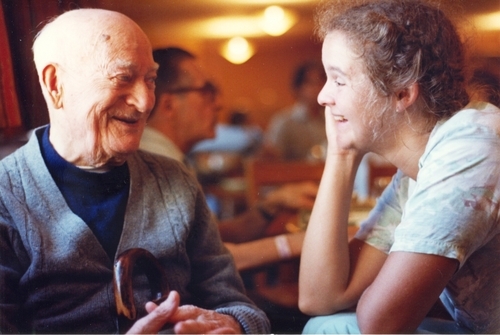Reid, Thomas: my Air Force recollections (November 15, 2006)
Interviewee: Reid, Thomas
An interview/narrative of Colonel Thomas Reid's experiences with the North American Aerospace Defense Command. Interview took place on November 15, 2006.
Rank: Colonel.
Interviewer: Mooney, John
ABSTRACT: Colonel Thomas Reid Discusses NORAD objective of dealing with Soviet air-breathing threats. Aircrafts used and 2 minute alert. Each sector had a 2 aircraft minimum and at Duluth scrabbled fighters 2-3 times a week on unknowns, most aircrafts domestics no flight plan correlation. North Bay 1980. North Bay had become the Canadian NORAD region, area of responsibility of Canada to the DEW line. DEW line only responsible for monitoring air breathing threat. Formation of Space Command, Commander of NORAD, was CINC NORAD, was the Air Force Space Commander, and the Unified Space Commander. NORAD mission stayed with air-breathing threat. Space Command dealt with monitoring ICBMs and possible ICBM interception. CINC always American a result of the NORAD agreement. Emphasis changing on threat during Reagan's early years. NORAD part of a much world system, that provided vital information to US intelligence. NORAD received some information of world sensors, for assessment of what threat what might be, if ICBM then relied to another CINC's hat to a retaliatory system. Threat assessment on one side and retaliation on other side. World sensors not part of NORAD, only part of it would come to NORAD. Canada benefited from NORAD knowledge in time of crisis. Threat information led to appropriate posture of Canadian posture. Bombers continue to be threat, even a first wave attack. Threat for Canada never changed from NORAD's initiation in regards to Soviet bombers. BMD developed in the United States separate from NORAD. Over the horizon back scatter radar never put into operational effect. The E-3A, being deployed and manned by Canadian crews. Defensive posture weakened by E-3A, not a 24 hour system. Colorado Springs 1986-1990 in charge before Space Command came in. In charge of taking out North Dew Line sites and Pine Tree line coming out and working on the remote unmanned North Warning System. Development of FOL's, Forward Operating Locations. OTHB systems supposed to look over east and west coast, but never came in, therefore weakening the capabilities of NORAD. West Coast of Canada vulnerable. E-3 to fill gap of West Coast. NORAD has responsibility for air breathing side of NORAD. There should be no problem with Canada developing BMD on the warning and threat assessment side and not the response side.
- In Collection:
- 1 sound recording (MP3)
- 38.83388, -104.82136
- One original audio cassette in Special Collections.
- Canadian Military Oral History Collection
- RT_494
- Special Collections Finding Aid: https://search.archives.uvic.ca/military-oral-history-collection
- January 24, 2013
- Digital sound recording in .wav format at 16 bits and 44 kHz. In .mp3 format at 56 kbps and 24 kHz. Digitized by JF, technical and cataloguing metadata provided by JF and JP. Interview migrated to digital format for UVic Special Collections in 2013. Migration metadata by KD and MT.
- Rights
- This interview has been posted with the understanding that it may be used for research purposes only. Should the interviewee or their heirs have any objections to this interview being accessible on the Internet, it will be removed promptly. Contact UVic Special Collections for permission if using for other than research purposes: speccoll@uvic.ca
- DOI
